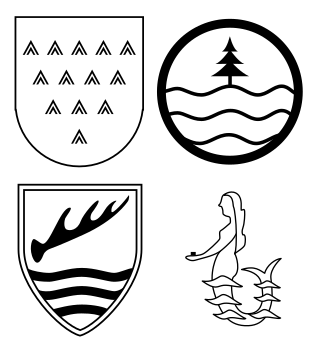
The 334th Infantry Division was a German Army infantry division in World War II. Originally formed in November 1942, it surrendered to the Allies at the conclusion of the Tunisian Campaign in May 1943. The division was reconstituted on 3 June 1943 in France within the 1st Army, with the staff of the 80th Infantry Division as well as remnants of the old division and replacement units. It spent the remainder of the war serving on the Italian Front.

The 709th Static Infantry Division was a German Army infantry division in World War II. It was raised in May 1941 and used for occupation duties during the German occupation of France in World War II until the Allied invasion. It was on the Normandy coast when the invasion occurred and so fought in the Battle of Normandy. The division was trapped in the Cotentin Peninsula and destroyed in the defense of Cherbourg.
This is the complete order of battle of Allied and German forces involved during Operation Market Garden.

The 26th Infantry Division was a pre-World War II German Infantry Division of the 1st mobilisation wave. It was mobilised for World War II on September 26, 1939, disbanded on September 10, 1944, near Radom and reformed as the 26th Volksgrenadier Division on September 17, 1944, near Poznań by absorption of the new 582nd Volksgrenadier Division of the 32nd mobilisation wave. Remnants of the Division entered U.S. captivity in the Harz region in 1945.
The 1st Division was a unit of the Prussian/German Army. It was formed in Königsberg in March 1816 as a Troop Brigade (Truppen-Brigade). It became the 1st Division on September 5, 1818. From the corps' formation in 1820, the division was subordinated in peacetime to I Army Corps. The 1st Division was disbanded in 1919, during the demobilization of the German Army after World War I.
The 2nd Division was a unit of the Prussian/German Army. It was formed in Danzig in March 1816 as a Troop Brigade (Truppen-Brigade). It became the 2nd Division on September 5, 1818. In 1890, the headquarters of the division was relocated to Königsberg, then the capital of East Prussia. In 1899, the headquarters was moved to Insterburg, further inland and closer to the border with the Russian Empire. From the latter's formation in 1820, the division was subordinated in peacetime to the I Army Corps. The 2nd Division was disbanded in 1919 during the demobilization of the German Army after World War I.
The 5th Guards Infantry Division was a division of the Royal Prussian Guards of the Imperial German Army. It was formed during World War I and dissolved with the demobilization of the German Army in 1919.

The 305th Infantry Division was a German Army unit that saw extensive, front-line action during World War II. This division was present at the Battle of Stalingrad, the Battle of Monte Cassino, and surrendered to U.S. Army's 88th Infantry Division in Northern Italy near Trento in late April 1945.
The 87th Infantry Division was a formation of the Imperial German Army in World War I. The division was formed in February 1915 as the provisional Dickhuth Corps, named after its commander, and became the 87th Infantry Division in August 1915. The division was disbanded in 1919 during the demobilization of the German Army after World War I.

The 38th SS Grenadier Division Nibelungen was a World War II infantry division of the Waffen-SS, the military wing of the German Nazi Party. Formed in April 1945, it was the last Waffen-SS division created during the war.

The 15th Infantry Division was an infantry division of the German Army during the interwar period and World War II, active from 1934 to 1945.

The 389th Infantry Division was a German division of the Wehrmacht in the Second World War, which fought for example in the Battle of Stalingrad. It was formed on 27 January 1942 in Milowitz.
The 708th Infantry Division was a German Army infantry division in World War II.
II Army Corps was a corps in the German Army during World War II.
The 11th Marine Division(German: 11. Marine-Infanterie-Division) was an infantry formation of the German Kriegsmarine under the control of the German Heer during the Second World War.
The 49th Infantry Division was a military formation of the German Heer (Army) which served during the later years of the Second World War.
The 196th Infantry Division was an infantry division of the German Heer during World War II.
The 416th Infantry Division was a German infantry division of World War II.
The 328th Infantry Division was the name of two distinct infantry divisions of the German army during World War II. The first, simply dubbed 328th Infantry Division, existed between 1941 and 1943, while the second, designated 328th Infantry Division "Zealand", existed for just under two months in 1945.
The 353rd Infantry Division was an infantry division of the German army during World War II.






